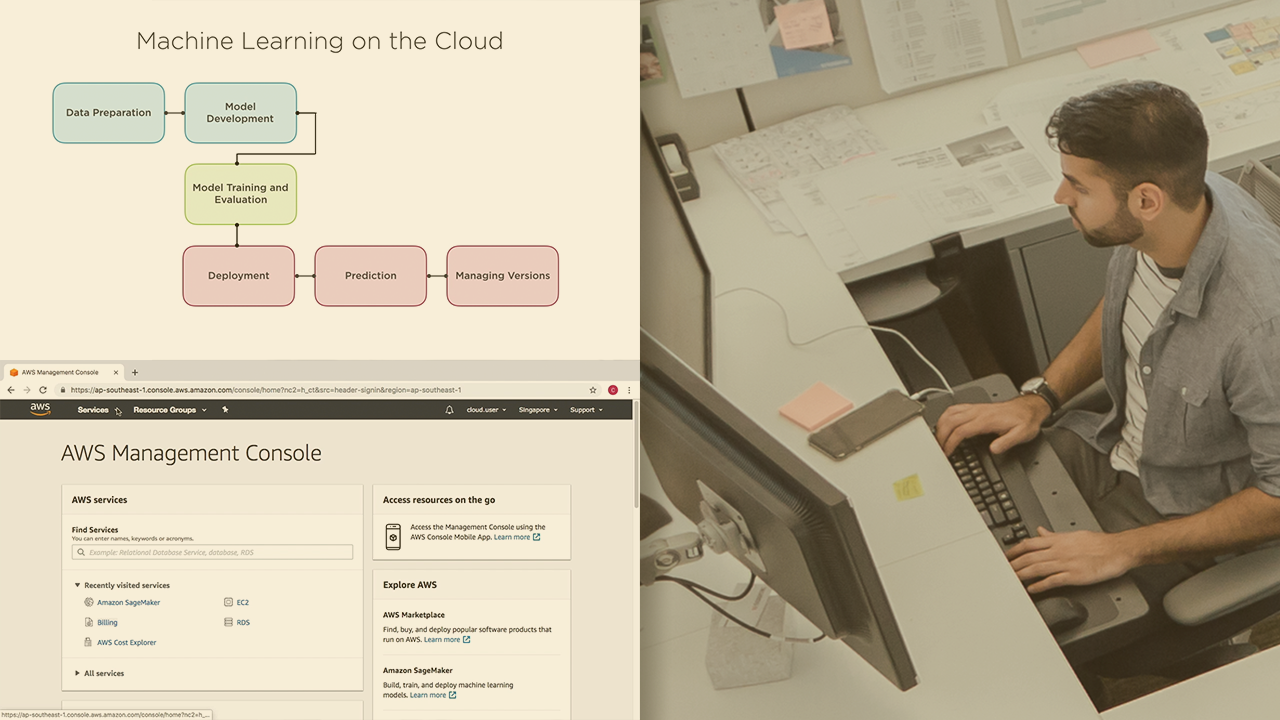- Course
Using PyTorch in the Cloud: PyTorch Playbook
This course covers the important aspects of using PyTorch on Amazon Web Services (AWS), Microsoft Azure, and the Google Cloud Platform (GCP), including the use of cloud-hosted notebooks, deep learning VM instances with GPU support, and PyTorch estimators.

- Course
Using PyTorch in the Cloud: PyTorch Playbook
This course covers the important aspects of using PyTorch on Amazon Web Services (AWS), Microsoft Azure, and the Google Cloud Platform (GCP), including the use of cloud-hosted notebooks, deep learning VM instances with GPU support, and PyTorch estimators.
Get started today
Access this course and other top-rated tech content with one of our business plans.
Try this course for free
Access this course and other top-rated tech content with one of our individual plans.
This course is included in the libraries shown below:
- AI
- Cloud
- Data
What you'll learn
PyTorch is quickly emerging as a popular choice for building deep learning models due to its flexibility, ease-of-use, and built-in support for optimized hardware such as GPUs. But, as a relatively recent entrant in the fast-moving world of deep learning frameworks, PyTorch is only now being fully supported by the major cloud providers.
In this course, Using PyTorch in the Cloud: PyTorch Playbook, you will gain the ability to use PyTorch on each of the big three cloud providers: Amazon Web Services (AWS), Microsoft Azure, and the Google Cloud Platform (GCP).
First, you will learn how PyTorch can be put to use on AWS, including on AWS Sagemaker notebook instances, Amazon Machine Images (AMIs), and using the Sagemaker PyTorch estimator for distributed training.
Next, you will discover how Microsoft Azure supports PyTorch, including Azure notebooks, Azure deep learning VMs, and PyTorch Estimators, which run using the Azure machine learning service.
Finally, you will round out the course by understanding GCP support for PyTorch, including both Cloud Datalab (which does not have GPU support), and JupyterLab on GCP Deep Learning VMs (which does).
When you are finished with this course, you will have the skills and knowledge to leverage PyTorch on each of the big three cloud providers.
Using PyTorch in the Cloud: PyTorch Playbook
-
Version Check | 16s
-
Module Overview | 52s
-
Prerequisites and Course Outline | 1m 41s
-
Machine Learning on the Cloud | 2m 47s
-
PyTorch: Taxonomy of Solutions | 3m 51s
-
Introducing SageMaker | 2m 51s
-
Creating a SageMaker Notebook Instance | 7m 9s
-
Prototyping a PyTorch Model on SageMaker Notebooks | 9m 42s
-
PyTorch Estimators on SageMaker | 1m 48s
-
Distributed Data Loading in PyTorch | 5m 26s
-
Distributed Training in PyTorch | 6m 8s
-
Using PyTorch Estimators for Distributed Training | 6m 17s
-
Model Deployment and Prediction Using Estimators | 4m 20s
-
AWS Deep Learning AMIs | 2m 6s
-
Instantiating a Deep Learning VM | 6m 9s
-
Building Models with GPU Support on the AWS Deep Learning VM | 6m 25s

